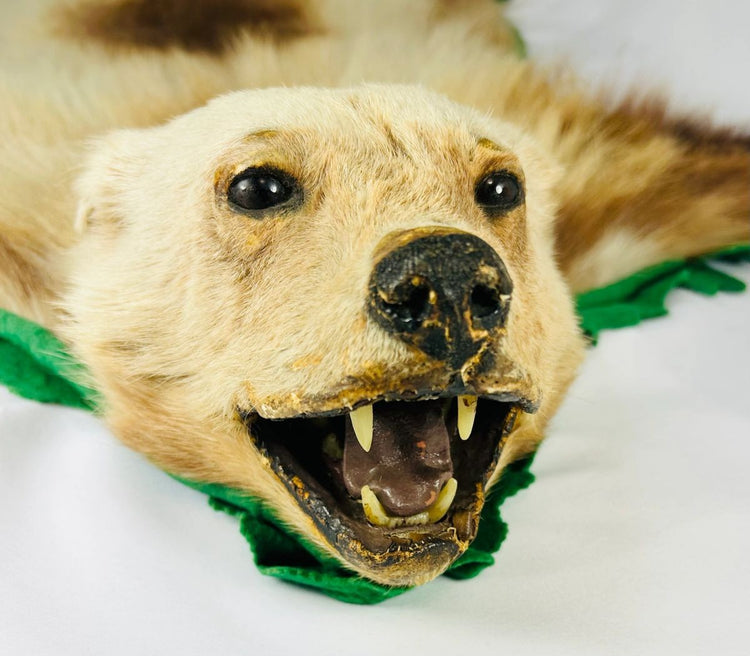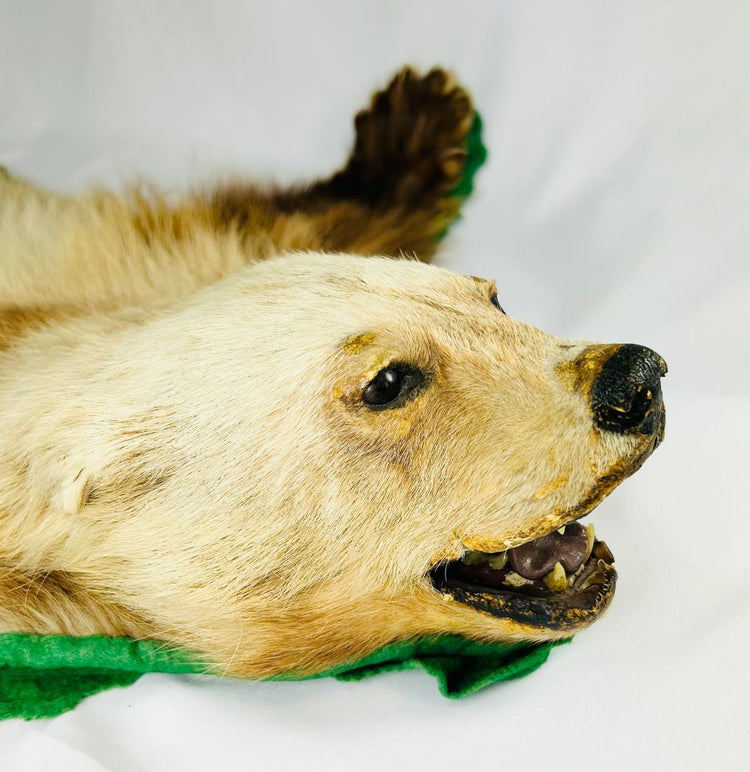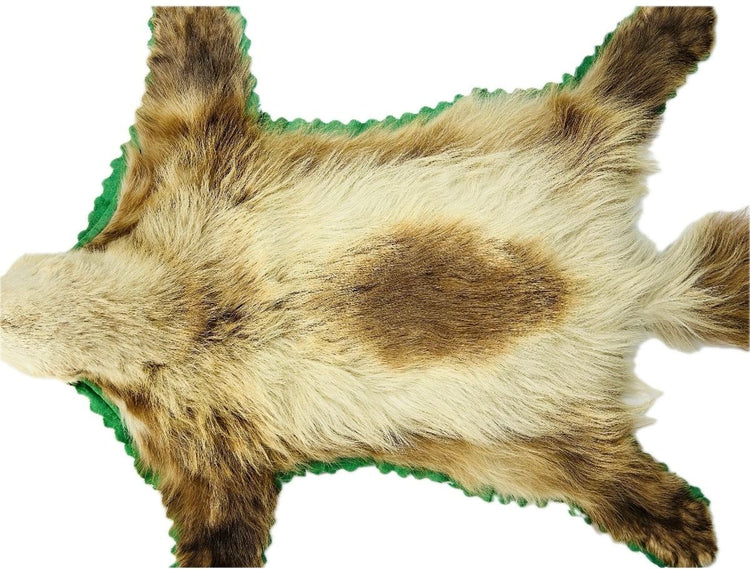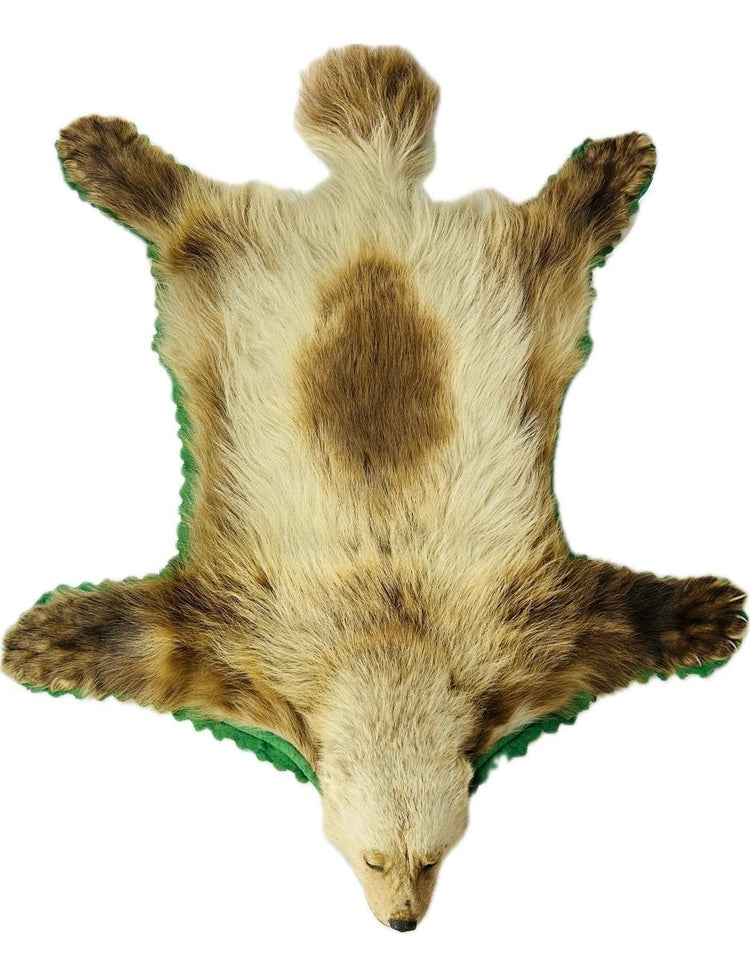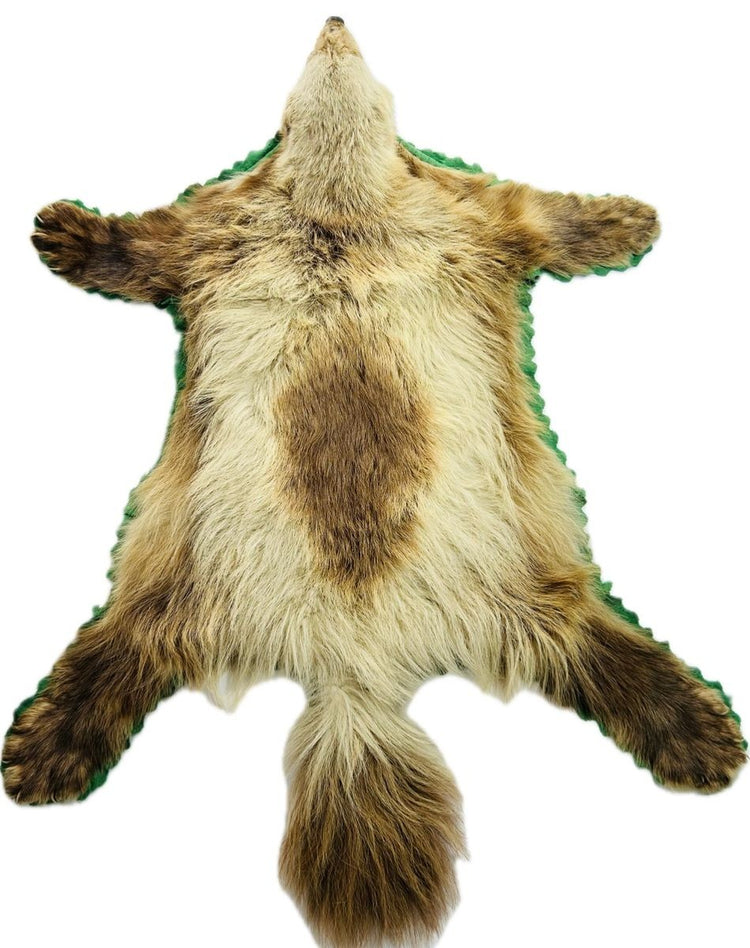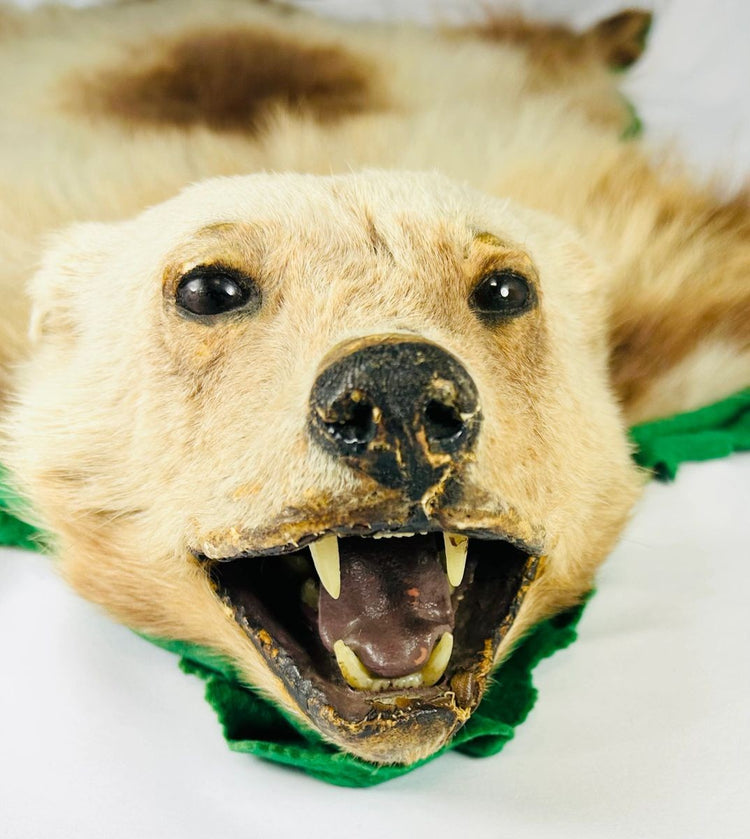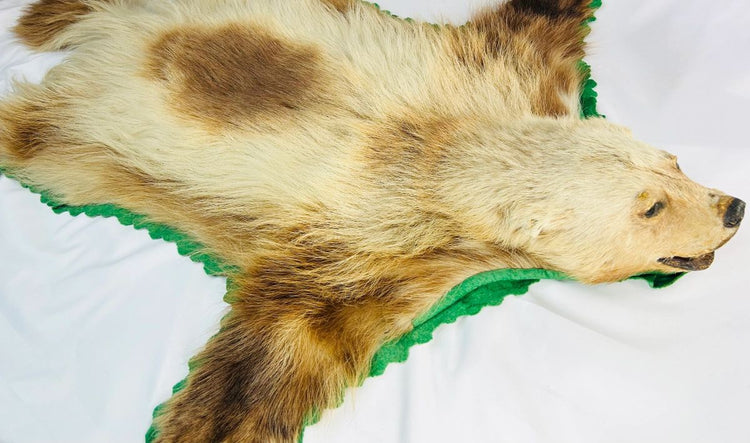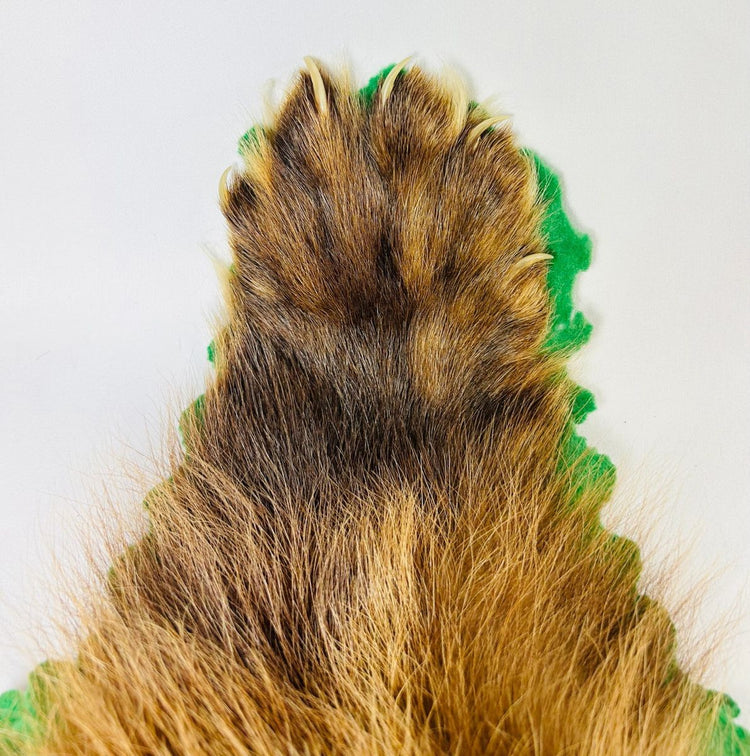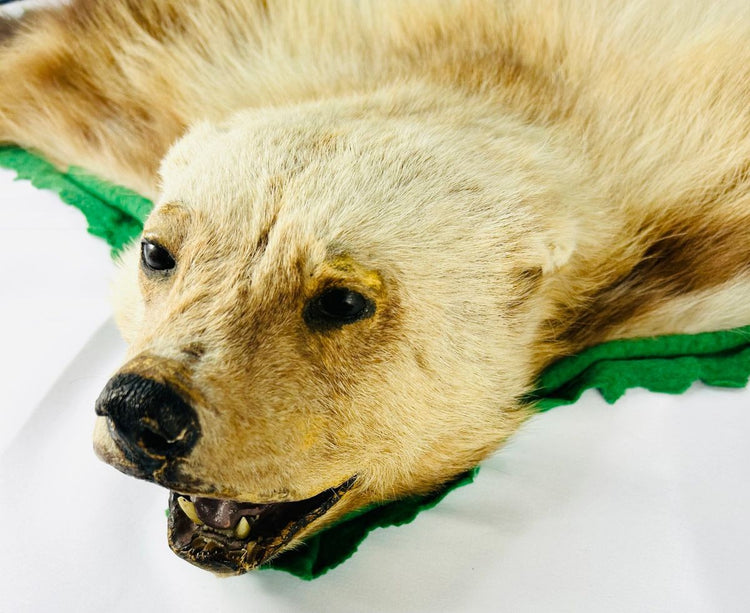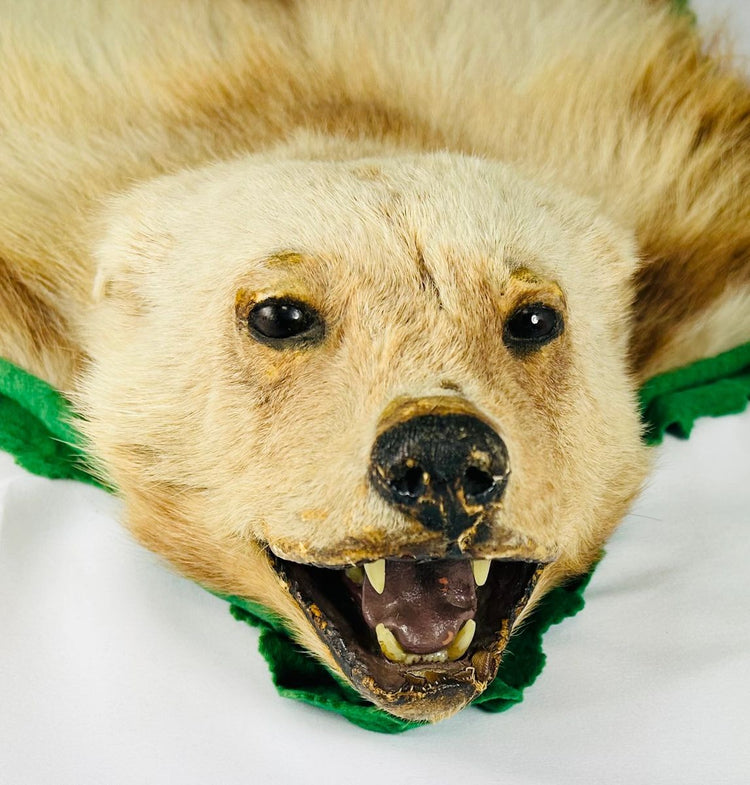Rare Early 20th Century Wolverine Taxidermy Rug | Northern North America
Description
More
Less
Historical Context & Origin
Region: Northern North America (likely Canada or Alaska)
Material: Preserved wolverine hide with glass eyes, original claws and teeth, felt backing
Period: Circa 1920s–1940s (Early to Mid-20th Century)
Description
This rare and visually arresting taxidermy rug is crafted from the hide of a full-grown wolverine (Gulo gulo), one of North America’s most elusive and formidable carnivores. The specimen retains its distinctive coloration: a pale buff-colored head and limbs contrasted by a dark saddle running across the back. The snarling head mount, with glass eyes, preserved teeth, and original claws, projects an intense lifelike presence. Finished with a traditional green felt backing and scalloped edges, the rug reflects the rustic style of lodge and outfitter trophy displays of the early 20th century, when frontier hunting culture reached its height.
Features
- Authentic wolverine hide with snarling head mount
- Distinctive buff head and limbs contrasted by dark saddle marking
- Glass eyes with open-mouth display
- Original claws and dentition preserved
- Green felt backing with scalloped trim
- Created in early 20th-century taxidermy tradition
Cultural Significance
Wolverines, revered in Indigenous mythology as emblems of tenacity and feared in frontier lore for their ferocity, have long occupied a place of respect in North American culture. Their rarity, due to their remote Arctic and Subarctic habitat, meant few were ever taken for trophy displays. Early 20th-century wolverine taxidermy pieces such as this were considered prestige items by trappers, bush pilots, and naturalists, and they remain highly collectible today as artifacts of wilderness history and outfitting culture.
Condition
Good vintage condition. The hide remains supple and intact with minor age-related wear. Teeth and claws are well-preserved. Some natural dryness and patina to the snout and mouth area. Felt backing with light edge wear consistent with age. No restorations.
Dimensions (approximate)
Length: 43 in
Width: 33 in
Age
Circa 1920s–1940s
Learn More
Read Why The Wolverine Is The Toughest Animal in the North
View a Polar Bear Taxidermy Rug in Our Collection
Description
Historical Context & Origin
Region: Northern North America (likely Canada or Alaska)
Material: Preserved wolverine hide with glass eyes, original claws and teeth, felt backing
Period: Circa 1920s–1940s (Early to Mid-20th Century)
Description
This rare and visually arresting taxidermy rug is crafted from the hide of a full-grown wolverine (Gulo gulo), one of North America’s most elusive and formidable carnivores. The specimen retains its distinctive coloration: a pale buff-colored head and limbs contrasted by a dark saddle running across the back. The snarling head mount, with glass eyes, preserved teeth, and original claws, projects an intense lifelike presence. Finished with a traditional green felt backing and scalloped edges, the rug reflects the rustic style of lodge and outfitter trophy displays of the early 20th century, when frontier hunting culture reached its height.
Features
- Authentic wolverine hide with snarling head mount
- Distinctive buff head and limbs contrasted by dark saddle marking
- Glass eyes with open-mouth display
- Original claws and dentition preserved
- Green felt backing with scalloped trim
- Created in early 20th-century taxidermy tradition
Cultural Significance
Wolverines, revered in Indigenous mythology as emblems of tenacity and feared in frontier lore for their ferocity, have long occupied a place of respect in North American culture. Their rarity, due to their remote Arctic and Subarctic habitat, meant few were ever taken for trophy displays. Early 20th-century wolverine taxidermy pieces such as this were considered prestige items by trappers, bush pilots, and naturalists, and they remain highly collectible today as artifacts of wilderness history and outfitting culture.
Condition
Good vintage condition. The hide remains supple and intact with minor age-related wear. Teeth and claws are well-preserved. Some natural dryness and patina to the snout and mouth area. Felt backing with light edge wear consistent with age. No restorations.
Dimensions (approximate)
Length: 43 in
Width: 33 in
Age
Circa 1920s–1940s
Learn More
Read Why The Wolverine Is The Toughest Animal in the North
View a Polar Bear Taxidermy Rug in Our Collection
You May Also Like


























